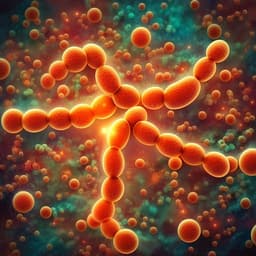
Chemistry
Synthesis of fluorescent organic nano-dots and their application as efficient color conversion layers
Y. Khan, S. Hwang, et al.
Discover the groundbreaking research conducted by Yeasin Khan and colleagues at Kyung Hee University, showcasing fluorescent organic nanoparticles that exceed the performance of traditional quantum dots. These innovative color conversion layers promise unmatched stability and efficiency in display technologies.
~3 min • Beginner • English
Related Publications
Explore these studies to deepen your understanding of the subject.







